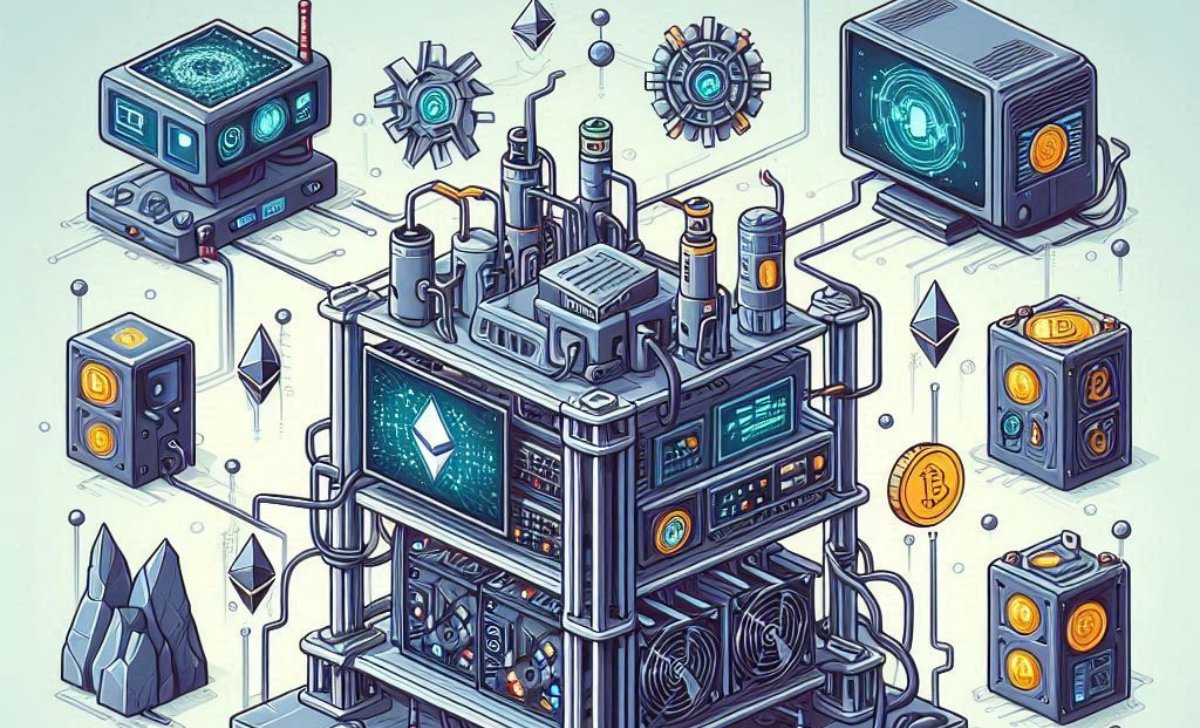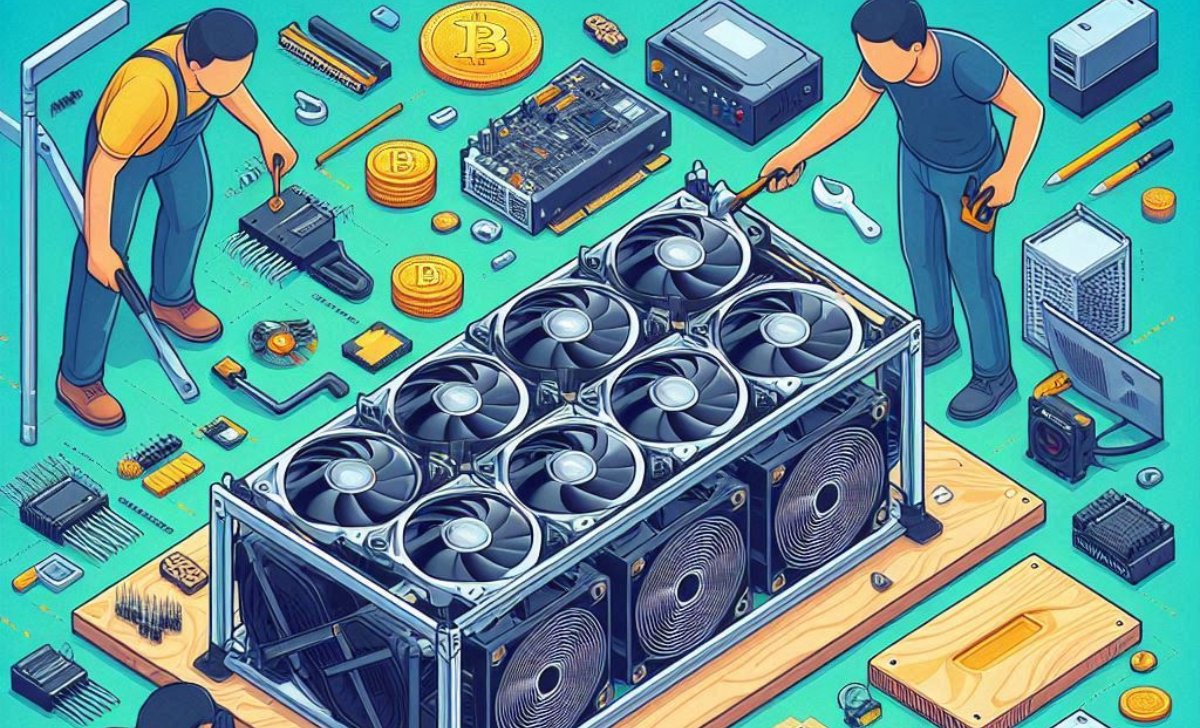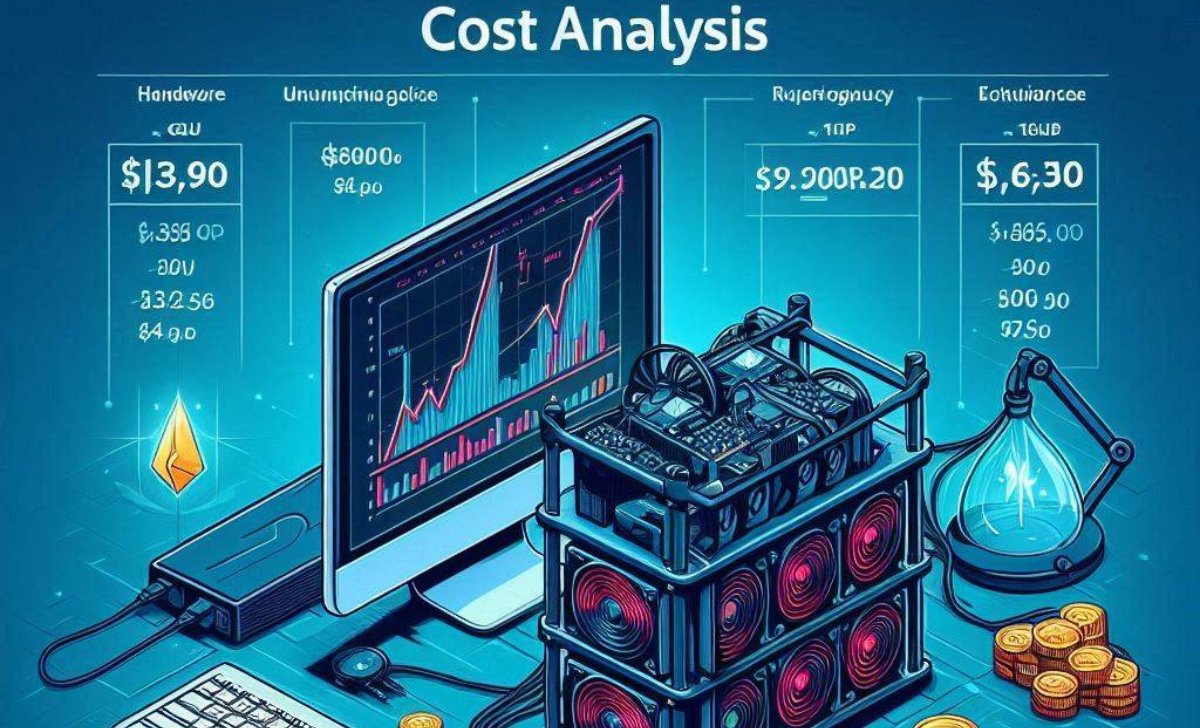Crypto mining setup is the foundation of a successful mining operation, requiring the right hardware, software, and configuration for optimal performance. Understanding the key components, step-by-step assembly, and cost analysis is crucial before getting started.
In this guide, TopCoin9’ll walk you through everything from choosing essential parts to optimizing efficiency, ensuring your mining rig runs smoothly and profitably.
What is a Crypto Mining Rig?

A crypto mining rig is a specialized computer system designed to solve complex cryptographic puzzles. By doing so, it validates transactions on a blockchain network and earns cryptocurrency as a reward.
There are different types of mining rigs, each suited for different types of cryptocurrencies:
- GPU Mining Rigs: These use multiple graphics processing units (GPUs) to mine cryptocurrencies like Ethereum and Ravencoin.
- ASIC Miners: Application-Specific Integrated Circuits (ASICs) are designed solely for mining a specific coin, such as Bitcoin.
- CPU Mining Rigs: These rely on a computer’s central processing unit (CPU) and are generally less efficient than GPU or ASIC miners.
Each type of mining rig has its advantages and drawbacks, so choosing the right one depends on your budget, technical expertise, and target cryptocurrency.
Now that we understand the basics, let’s explore the essential components you need for a crypto mining setupin the next part!
Essential Components for a Crypto Mining Setup
Building a mining rig requires several key components, each playing a crucial role in the rig’s performance and efficiency. If you’re wondering how to mine altcoins, having the right hardware setup is essential for maximizing efficiency and profitability.
- GPU or ASIC Miner: The GPU or ASIC miner is the most important component of a mining rig. GPUs like the NVIDIA RTX 4090 or AMD RX 7900 XTX offer high processing power for mining various cryptocurrencies. If mining Bitcoin, ASIC miners such as the Antminer S19 Pro are more efficient.
- Motherboard: The motherboard connects all components and should support multiple GPUs. Popular choices include the ASUS B250 Mining Expert and MSI Z390-A PRO.
- Power Supply Unit (PSU): A high-wattage PSU ensures stable power delivery. It’s crucial to calculate the total wattage required based on the GPUs used. Brands like EVGA and Corsair offer reliable mining PSUs.
- RAM and Storage: Most mining setups require at least 8GB of RAM and a small SSD (120GB–256GB) for the operating system and mining software.
- Cooling System: Mining rigs generate significant heat, making cooling solutions such as high-speed case fans or liquid cooling systems essential for maintaining performance.
- Mining Software & Operating System: Software like NiceHash, CGMiner, or BFGMiner allows you to manage and optimize your mining operations. Most miners use Windows or a Linux-based OS like HiveOS for better control.
Now that we have all the necessary components, let’s dive into how to build a mining rig step by step and ensure a smooth assembly process!
Step-by-Step Guide to Building a Crypto Mining Rig

Now that you have all the essential components, it’s time to put everything together and get your crypto mining setup up and running. Follow these step-by-step instructions to build a fully functional mining rig.
Step 1: Gather All Necessary Components
Ensure you have all parts, including GPUs, motherboard, PSU, RAM, storage, cooling system, and mining software.
Step 2: Assemble the Hardware
- Install the motherboard inside the mining frame.
- Attach the CPU, RAM, and storage device.
- Connect the PSU and ensure all power cables are properly managed.
- Install GPUs and connect them using riser cables.
Step 3: Install the Operating System and Mining Software
- Install a fresh copy of Windows or Linux-based OS.
- Download and configure mining software based on your chosen cryptocurrency.
Step 4: Configure Mining Settings
- Connect to a mining pool like Ethermine or F2Pool.
- Adjust power settings and overclocking parameters for better efficiency.
Step 5: Start Mining & Monitor Performance
- Run mining software and track performance using monitoring tools.
- Regularly check GPU temperature and hash rate to ensure stable mining.
Once your mining rig is up and running, it’s essential to assess the overall costs. This mining rig guide will help you break down the expected investment and expenses through the content below!
Cost Analysis: How Much Does It Cost to Build a Mining Rig?

The total cost of the best crypto mining setup depends on factors like hardware choice, electricity consumption, and mining software. Below is a rough estimate for a mid-range GPU mining rig:
| Component | Estimated Cost (USD) |
| GPUs (3x RTX 3080) | $2,400 |
| Motherboard | $200 |
| PSU (1200W) | $250 |
| RAM & Storage | $150 |
| Cooling System | $100 |
| Frame & Accessories | $100 |
| Total | $3,200+ |
Additional costs include electricity ($100–$300/month), software subscriptions, and periodic maintenance. While the initial investment may seem high, a well-optimized mining rig can generate steady returns over time.
To maximize profits, miners should follow best practices for efficiency and longevity. Let’s discuss how to optimize your crypto miningsetup in the next part!
Best Practices & Tips for Crypto Mining Efficiency

To get the most out of your mining rig, you need to follow best practices that improve efficiency and longevity. This mining rig guide will help you optimize performance while keeping costs under control.
- Optimize Power Consumption: Using energy-efficient GPUs can significantly reduce electricity costs. Setting power limits ensures lower consumption without sacrificing mining performance.
- Maintain Proper Cooling & Ventilation: A well-cooled mining rig runs more efficiently and lasts longer. Install extra fans or a liquid cooling system, and place your setup in a ventilated area to prevent overheating.
- Join a Reliable Mining Pool: Solo mining has low profitability due to high competition. By joining a pool like Binance Pool or Slush Pool, you can earn more consistent rewards.
- Keep Mining Software Updated: Regularly updating crypto mining software and GPU drivers helps maintain stability. New versions often include performance improvements and security patches.
- Secure Your Mining Rig: Use strong passwords and enable two-factor authentication (2FA) to protect your mining accounts. Additionally, safeguard your system against malware and hacking attempts.
By implementing these best practices, you can significantly enhance your mining rig’s efficiency and profitability.
A well-planned crypto mining setup ensures stable performance and long-term profitability. By choosing the right components and optimizing efficiency, you can maximize your mining success. Stay tuned for our latest guides to keep your mining rig running at its best!

Ethan Carter, a seasoned crypto analyst with 7+ years of experience, has a deep understanding of market trends, DeFi, and blockchain technologies. His expert insights and market forecasts have helped thousands of traders and investors make informed decisions.
Email: [email protected]












